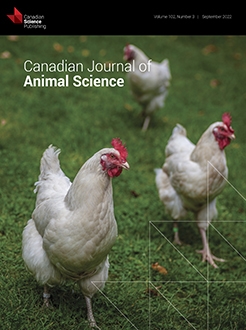This experiment was conducted to investigate the effect of atmospheric ammonia (NH3) on histological changes, cell cycle distribution, and apoptosis of the spleen in chickens. Two hundred forty chickens were randomly allocated to the control group (without NH3 challenge) and NH3 group (70 ± 5 ppm NH3). The experiment lasted for 8 days. The results showed that NH3 exposure caused decreased relative weight (P < 0.05), dysplasia of white pulps, obvious ultrastructural lesions, upregulation of G0G1 phase cells, excessive apoptosis, and oxidative stress (P < 0.05) in the spleen. The mechanisms of cell cycle blockage were closely related to the upregulation of the P53 and P21 genes (P < 0.05), the downregulation of the cyclin D1 and CDK6 genes (P < 0.05), and the decrease of proliferating cell nuclear antigen (PCNA) protein (P < 0.05). The activated apoptosis resulted from the increased gene and protein expression of Bax and caspase-3 (P < 0.05), and the decreased gene and protein expression of Bcl-2 (P < 0.05). The results suggested that 70 ± 5 ppm NH3 caused the spleen dysplasia, which was closely related to the cell cycle arrest and mitochondrial apoptotic pathway activation.
L’expérience a été effectuée afin d’évaluer les effets de l’ammoniac (NH3) atmosphérique sur les changements histologiques, la distribution du cycle cellulaire, et l’apoptose de la rate chez les poulets. 240 poulets ont été alloués de façon aléatoire aux groupes témoin (sans provocation NH3) et NH3 (70 ± 5 ppm NH3). L’expérience a duré huit jours. Les résultats ont montré que l’exposition à NH3 a provoqué une diminution du poids relatif (P < 0,05), une dysplasie des pulpes blanches, des lésions ultra-structurales évidentes, une régulation positive des cellules en phase G0G1, une apoptose excessive, et un stress oxydatif (P < 0,05) dans la rate. Les mécanismes de blocage du cycle cellulaire étaient reliés étroitement à la régulation positive des gènes de P53 et P21 (P < 0,05), à la régulation négative des gènes de CyclinD 1 et CDK 6 (P < 0,05), et à la diminution de la protéine antigène nucléaire de prolifération cellulaire (PCNA — « proliferating cell nuclear antigen ») (P < 0,05). L’activation de l’apoptose pourrait être imputable à l’augmentation de l’expression des gènes et protéines Bax et caspase-3 (P < 0,05), et la diminution de l’expression du gène et de la protéine Bcl-2 (P < 0,05). Les résultats suggèrent que 70 ± 5 ppm NH3 ont provoqué une dysplasie de la rate, qui étaient étroitement reliés à l’arrêt du cycle cellulaire et l’activation de la voie apoptotique des mitochondries. [Traduit par la Rédaction]





